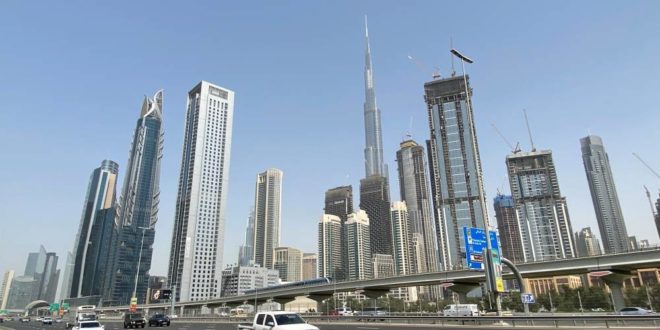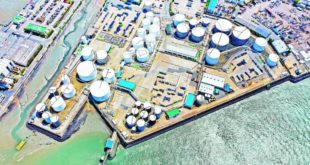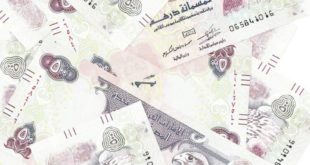The United Arab Emirates witnessed a strong economic performance in 2022, driven by an increase in oil production and an improvement in the non-oil sectors, as the non-oil GDP continued to recover last year, by about 4.7%, driven by strong growth in the construction and tourism sectors, according to the latest report issued by the bank. International Conference on Economic Developments in the Middle East and North Africa, under the title: “When Destinies Change: The Long-Term Effects of High Prices and Food Insecurity in the Middle East and North Africa Region.”
In its April issue, which coincided with the spring meetings between the International Monetary Fund and the Bank in Washington, the bank predicted that “economic growth in the United Arab Emirates will slow down in 2023 compared to last year, due to the decline in global economic activity, the stagnation of oil production, and tightening financial conditions.
The bank also predicted, in a report that is issued twice annually, that “real GDP will grow by 3.6% in 2023 before declining slightly during the forecast period,” noting that “the non-oil sector is expected to grow by 4.2% in 2023, supported by Strong domestic demand, especially in the tourism, real estate, construction, transportation and manufacturing sectors.
In its view of the UAE economy, the bank considered that “growth will be further enhanced through the implementation of the government’s agenda and the efforts of the Central Bank to enhance the stability, efficiency and flexibility of the financial system.”
GDP growth
The report added: “After tightening OPEC + production quotas, the oil GDP in the UAE is expected to grow by 2% in 2023 before rising to 2.8 and 3% in 2024 and 2025, respectively.” He continued, “The strength of the US dollar, tightening monetary policy, and lower global commodity prices will keep inflation rates low, as they will hover around 3.4% in 2023.”
He pointed out that “the high oil revenues, supported by the strong performance of the non-oil sectors, will maintain the large surplus of the public finances balance, which is expected to reach 6.2% of GDP in 2023.”
The report considered that “the implementation of plans to enhance the stability and efficiency of fiscal revenues, for example, the introduction of information and communication technology and the preservation of prudent and well-coordinated financial foundations and rules for the state, should lead to improving the fiscal buffers and the sustainability of public finances in general.”
The report stressed that “bilateral free trade agreements between the UAE and its trading partners will open up major markets, increase non-oil exports and offset global headwinds. Therefore, the current account balance is expected to stand at 11.7 and 10.8% of GDP in 2023 and 2024, respectively, which keeps the external account in a comfortable position with moderate oil prices.
Trade, finance and travel
In its report, the World Bank emphasized that “the United Arab Emirates remains the hub of trade, finance and travel in the region, due to the progress made in economic diversification and reducing dependence on hydrocarbons.” “However, the UAE will increasingly face greater regional competition for foreign investment from many countries, as these countries adopt economic plans similar to the Abu Dhabi Economic and Environmental Vision 2030 and the Dubai Industrial Strategy 2030,” he said.
And he believed that “hydrocarbon activity continues to be the main source of government revenue,” noting that “steps towards diversifying public revenues are underway with the introduction of value-added tax, and more recently, corporate income tax (CIT) and the phasing out of the business fee structure.”
The report considered that “the prospects for economic growth for the non-oil sector are strong, while high energy prices will continue to strengthen external and financial positions,” noting that “the main impact of the war in Ukraine on the economy of the United Arab Emirates will be through the volatility of oil prices and inflation.” global, and the shocks to which the tourism sector is exposed.
He added, “Domestic monetary policy is set for further tightening in line with the policy of the US Federal Reserve, which may dampen economic recovery and job creation.”
And the World Bank report considered that “the main risks to the economic growth of the United Arab Emirates are represented in global uncertainty, the development of the war in Ukraine, the potential global economic slowdown, and the disagreement between OPEC + members regarding production quotas. In addition, delaying or continuing the implementation of structural reforms would reduce the prospects for achieving stronger growth and employment in the long term.
Image
unemployment benefits
The bank expected that “private consumption will support the non-oil sectors by launching mandatory unemployment benefits for local and foreign workers.”
He added, “Business sentiment remains positive, although the global economic slowdown, rising interest rates, and inflation eased the Purchasing Managers’ Index (PMI) slightly to 54.2 in February 2023.” He explained, “The main inflation was estimated at 4.8% in 2022, to reflect strong consumption and investments.”
The bank indicated that “in the wake of the Federal Reserve’s tightened monetary policy, while maintaining the stability of the exchange rate, the Central Bank of the United Arab Emirates raised interest rates six times in 2022. Despite the high rates, the ratio of non-performing loans to total loans continued to decline. Decline, to reflect a strong path to improve the economy ».
And he considered that “the sharp rise in oil prices, and the cancellation of financial measures related to supporting the private sector during Covid, contributed to further expanding the fiscal surplus, which is estimated to reach 7.4% of GDP in 2022.” He added, “Moreover, the rise in oil revenues
 Media ININ Economy We Trust
Media ININ Economy We Trust








